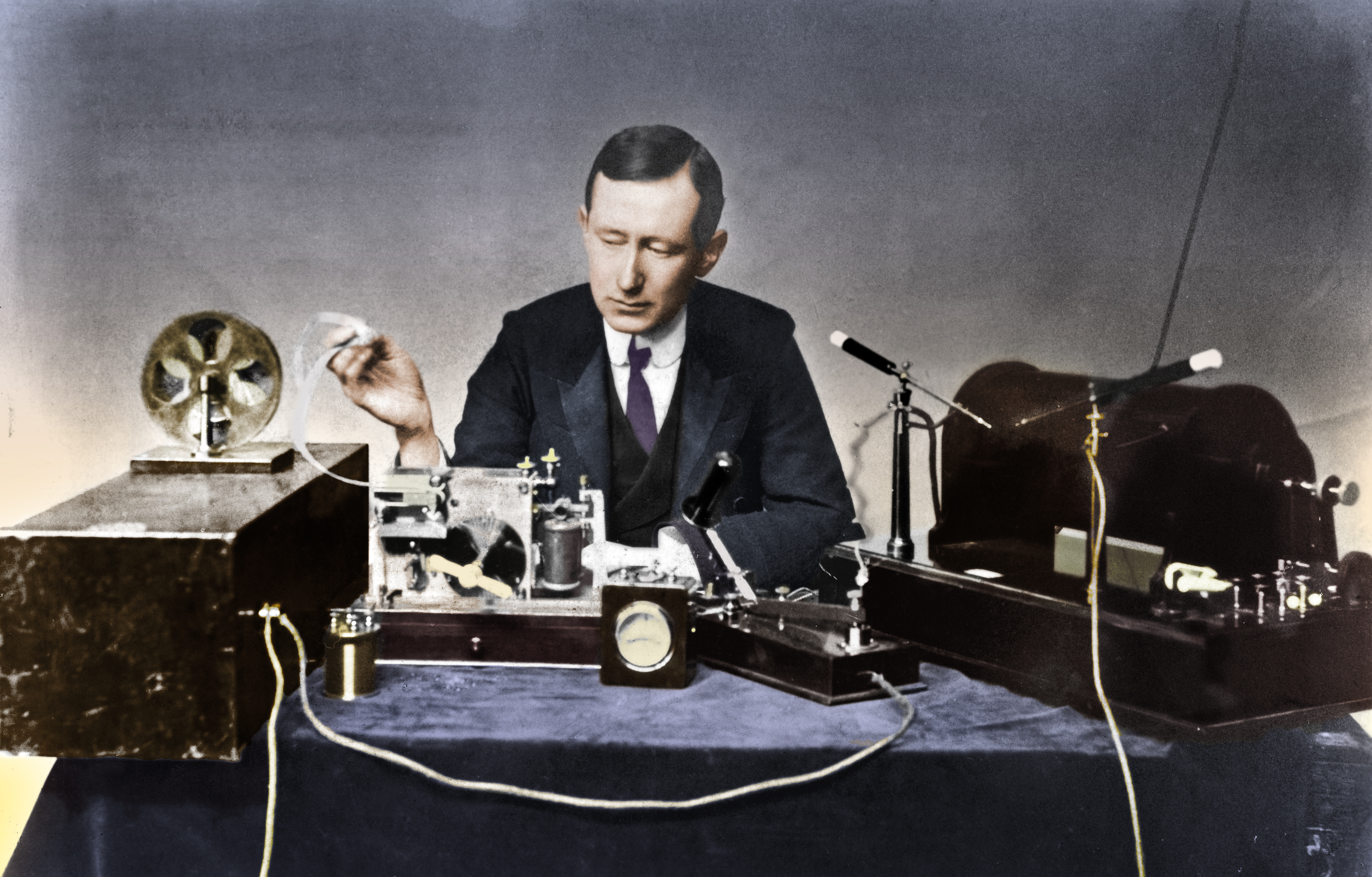Wireless communication involves sending and receiving information through air or space rather than wires or cables. The information is carried by electromagnetic waves, usually radio waves. These waves are traveling patterns of electric and magnetic energy. Wireless devices send and receive signals from a few feet or meters to thousands of miles or kilometers.

Common wireless communication devices include walkie-talkies and cellular telephones. The military often uses larger wireless units that can be carried by soldiers or mounted in vehicles. Aircraft and sea vessels communicate via wireless. Artificial satellites relay telephone calls using microwave transmissions. Broadcast television and radio stations transmit programs wirelessly.
How wireless communication works.
Essentially any form of information can be transmitted wirelessly, including text, sound, and video. Every wireless communication system has three elements: (1) a transmitter, (2) a receiver, and (3) a wireless channel. The transmitter and receiver are electronic devices, and the wireless channel is the set of paths over which the signals travel.
Wireless signals propagate (travel) via a carrier wave. This wave is modulated (altered) to carry information. Amplitude modulation (AM) varies the strength of the carrier wave. Frequency modulation (FM) varies the number of cycles per second of the carrier wave (see Frequency modulation ). Phase modulation (PM) varies the phase (timing) of the carrier wave. Information in digital (numerically encoded) form may be sent via any of the three modulation methods or by a combination of methods.
Unlike wire-based systems, wireless communication systems can function when the transmitter or receiver—or both—are moving. However, as the paths of the signals change, the signals can fade or become distorted. Thus, wireless communication can be less reliable than wire-based communication.
Wireless networking
enables laptop computers and other electronic devices in relatively close proximity to transfer data without the use of wires. Wireless networking technologies include Wi-Fi, WiMAX, Bluetooth, and ultra-wide bandwidth (UWB) wireless.
Wi-Fi, for example, enables portable computers and other devices to connect to the Internet and other information networks. The connection is made through a combination receiver and transmitter called an access point. The region around an access point where devices can connect to it is called a hotspot. Many schools, airports, and businesses have established wireless Internet hotspots. WiMAX provides the same capabilities with the potential for improved speed, range, and security.
History.
The Italian inventor Guglielmo Marconi made one of the earliest long-distance wireless transmissions in 1895. The Canadian-born inventor Reginald Fessenden is credited with making the first wireless transmission of speech in 1900 and the first radio transmission of music in 1906. Inventors developed walkie-talkies during the late 1930’s and early 1940’s. The first bulky wireless telephones became available during the mid to late 1940’s. Companies began offering commercial cellular telephone service during the late 1970’s and early 1980’s. Since the early 1980’s, the number of wireless systems that use digital technology has greatly increased. Wireless networking became popular in the early 2000’s.

